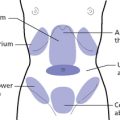 OBSERVATION OF THE EXCRETIONS
OBSERVATION OF THE EXCRETIONS
INTRODUCTION
Generally, the term ‘observation of the excretions’ would include observation of urine, stools, vaginal discharge and menstrual blood, as well as of sputum, nasal discharge and sweat. As the doctor normally finds out about the first group of excretions through interrogation rather than observation, the reader should refer also to the Interrogation section, Part 2, Chapters 31 and 46.
SPUTUM
Interrogation, Chapter 38; Hearing and smelling, Chapter 54; Symptoms and Signs, Chapter 63
Box 20.1 summarizes sputum signs.
NASAL DISCHARGE
Interrogation, Chapter 35; Symptoms and Signs, Chapter 58
Box 20.2 summarizes patterns underlying nasal discharges.
SWEAT
Interrogation, Chapter 41; Hearing and smelling, Chapter 54; Symptoms and Signs, Chapter 76
Sweating is generally due either to Heat or to a deficiency (of Qi, Yang or Yin).
Box 20.3 summarizes patterns underlying sweating.
STOOLS
Interrogation, Chapter 31; Hearing and smelling, Chapter 54; Symptoms and Signs, Chapter 72
Colour
Pale, almost white stools indicate Cold in the Large Intestine. Green stools indicate Liver-Qi invading the Spleen. Red stools indicate the presence of fresh blood and this may be due either to Heat in the Large Intestine or to Spleen-Qi deficiency. Greenish-bluish stools indicate the penetration of external Cold into the Large Intestine (common in babies). Black or very dark stools indicate Blood stasis.
Consistency
The normal stool is well formed, not loose, not too dry and floating.
Undigested food in the stools indicates Spleen-Qi deficiency.
Shape
Stools like small pellets indicate Liver-Qi stagnation or Heat if they are also dry. Long and thin stools like pencils indicate Spleen-Qi deficiency (but bear in mind that they could also indicate carcinoma of the bowel). (See Figure 31.1 on p. 272.)
Box 20.4 summarizes the patterns underlying abnormal stools.
URINE
Interrogation, Chapter 31; Hearing and smelling, Chapter 54; Symptoms and Signs, Chapter 73
Box 20.5 summarizes urine signs.
MENSTRUAL BLOOD
Interrogation, Chapter 46; Hearing and smelling, Chapter 54; Symptoms and Signs, Chapter 84
VAGINAL DISCHARGE
Interrogation, Chapter 46; Hearing and smelling, Chapter 54; Symptoms and Signs, Chapter 89
Colour
Vaginal discharges may vary in colour from white, through yellow or greenish to red.
Yellow or red discharge with white pus after menopause is due to Toxic Heat.
Lochia
Hearing and smelling, Chapter 54; Symptoms and Signs, Chapter 87
Abundant and pale lochia generally indicate Qi deficiency; abundant and red lochia are due to Blood-Heat or Empty-Heat in the Blood; while abundant and dark lochia indicate Blood stasis or Qi deficiency with Blood stasis. Scanty lochial discharge, if dark, usually indicates Blood stasis; if pale, it may also be due to a severe deficiency of Qi and Blood. A scanty lochial discharge may also be due to Cold obstructing the Uterus.
Box 20.7 summarizes patterns underlying vaginal discharges.




